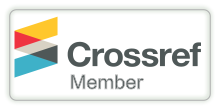WOMEN IN HIGHER EDUCATION: ASPIRATIONS AND EXPECTATIONS
उच्च शिक्षा में महिलाएँ: आकांक्षाएँ और अपेक्षाएँ
DOI:
https://doi.org/10.29121/shodhkosh.v5.i2.2024.5788Keywords:
Higher Education, Women, Commission, PoliciesAbstract [English]
The landscape of gender as an academic discipline is very vast. When we talk about the relationship between education and gender as a part of education, it is revealed that the field itself is very diverse. If we explore the rich literature on gender and education available across the world, it becomes evident that most of the existing literature deals with primary education and there is a dearth of literature crafted in the field of women and higher education. Most of the studies conducted in these fields specifically discuss the problems faced by women in accessing and excelling in higher education. There are very few studies that talk about the aspirations and expectations of society from these educated women and vice versa, i.e. consider the expectations and aspirations of women pursuing higher education themselves.
In this paper, the researcher has attempted to understand this very area of higher education of women. In the first section of the paper, the researcher has tried to overview the major trends related to higher education and gender in this field across the world and in the specific context of India. In the next section, the researcher has tried to discuss in detail the various expectations of society from educated women and how this has changed during the course of India's development. For this purpose, the researcher has tried to trace the development of women's higher education in India and the ideology that drives these developmental initiatives.
Abstract [Hindi]
एक अकादमिक अनुशासन के रूप में जेन्डर का परिदृश्य बहुत विशाल है। जब हम शिक्षा के एक भाग के रूप में शिक्षा और जेन्डर के बीच संबंध की बात करते हैं, तो यह सामने आता है कि यह क्षेत्र अपने आप में बहुत ही विविध है। यदि हम दुनिया भर में उपलब्ध जेन्डर और शिक्षा के समृद्ध साहित्य का अन्वेषण करते हैं, तो यह स्पष्ट हो जाता है कि मौजूदा साहित्य का अधिकांश हिस्सा प्राथमिक शिक्षा से संबंधित है और महिलाओं और उच्च शिक्षा के क्षेत्र में गढ़े गए साहित्य की थोड़ी कमी है। इन क्षेत्रों में किए गए अधिकांश अध्ययन विशेष रूप से उच्च शिक्षा में महिलाओं की पहुंच और उत्कृष्टता में आने वाली समस्याओं के बारे में चर्चा करते हैं। ऐसे बहुत कम अध्ययन हैं जो समाज की इन शिक्षित महिलाओं से आकांक्षा और अपेक्षा के बारे में बात करते हैं और इसके विपरीत, यानी उच्च शिक्षा प्राप्त करने वाली महिलाओं की अपनी अपेक्षाओं और आकांक्षाओं के बारे में विचार करें।
इस शोध पत्र में शोधकर्त्री ने महिलाओं की उच्च शिक्षा के इसी क्षेत्र को समझने का प्रयास किया है। शोध पत्र के पहले खंड में, शोधकर्त्री ने दुनिया भर में और भारत के विशिष्ट संदर्भ में उच्च शिक्षा और इस क्षेत्र में जेन्डर से संबंधित प्रमुख रुझानों का अवलोकन करने की कोशिश की है। अगले खंड में, शोधकर्त्री ने शिक्षित महिलाओं से समाज की विभिन्न अपेक्षाओं और यह कैसे भारत के विकास के दौरान बदल गया है, के बारे में विस्तार से चर्चा करने की कोशिश की है। इस उद्देश्य के लिए, शोधकर्त्री ने भारत में महिलाओं की उच्च शिक्षा के विकास और इन विकासात्मक पहलों को संचालित करने वाली विचारधारा का पता लगाने की कोशिश की।
References
Agarwal, S.P. and Agarwal, J.C. (1992). Women's Education in India. New Delhi: Concept Publishing Company.
MHRD (1986). National Education Policy. Delhi: Government of India.
MHRD (1992). Action Plan. Delhi: Government of India.
MHRD (2020). National Education Policy, 2020. Delhi: Government of India.
Kaviraj S. (2010). In The Oxford Companion to Nationalism. New Delhi: Oxford University Press.
Karlekar, M. (1986). Kadambini and the Bhadralok: Early Debates over Women's Education in Bengal. In Economic and Political Weekly, 20(17), pp. WS25-WS31.
Connolly, P. and Healy, J. (2004). Symbolic Violence and the Neighborhood: The Educational Aspirations of 7-8 Year Old Working Class Women. In The British Journal of Sociology, 55(4).
Confederation of Indian Industry (2015). Annual Status of Higher Education of States and Units in India, 2015. New Delhi: Deloitte.
Chanana, K. (1988). Socialization, Education and Women. New Delhi: Orient Longman.
Jabwala, R. and Sharma, B. (2015). Daughters' Education. In D. Jain and C.P. Sujaya (eds.), Indian Women. New Delhi: Publications Division.
Department of Social Welfare (1974). Committee on the Status of Women. New Delhi: Ministry of Education and Social Welfare, Government of India.
David, M. E. (2016). A Feminist Manifesto for Education. UK: Polity Press.
Dasgupta, S.N. (1972). Factors in Education Aspirations: A Study of High School Seniors in Prince Edward Island, Canada. In American Journal of Education, Island, Canada. Retrieved from http://www.springerlink.com
Dubey, L. (2001). Anthropological Explorations in Gender: Intersecting Fields. New Delhi: Sage Publications.
Dhar, D. (2014). Education and Gender. London, New Delhi: Bloomsbury.
Netkerur, N.; Chhabra, S.; Katkar, P., and Kwatra, A. (2015). Gender Scenarios—Some Insights. D. Jain and C.P. Sujaya (eds.). Indian Women. New Delhi: Publications Division.
Forbes, G. (1999). Women in Modern India. London: Cambridge University Press.
Beauvoir, S.D. (1983). The Second Sex. Harmondsworth: Penguin Books.
Government of India (1959). National Committee on Women's Education. New Delhi: Ministry of Education.
Government of India (2020). All India Survey of Higher Education 2019-20. New Delhi: MHRD.
Marini, M.M. (1978). Sex Differences in the Determination of Adolescents' Aspirations: A Review of Research in Sex Roles, Volume 4. Retrieved from http://www.springerlink.com
Menon, N. (2012). Seeing Like a Feminist. New Delhi: Zubaan and Penguin.
UNESCO (2012). UNESCO World Atlas of Gender Equality in Education. France: UNESCO.
Planning Commission (1985). Seventh Five-Year Plan (1985-1990). New Delhi: Government of India.
Lee, Peter S. et al. (2007). Post-graduate Educational Aspirations and Policy Implications: A Case Study of University Students in Western China, in Journal of Higher Education Policy and Management, Volume 29. Retrieved from - http://pdfserve.informaworld.com/802376_912059728_779451555.pdf
Warton, A. S. (2005). The Sociology of Gender: An Introduction to Theory and Research. Malden: Blackwell Publishing
Ministry of Education (1962). Report of the University Education Commission. Delhi: Government of India
Ministry of Education (1964). Committee on Differentiation of Curricula for Boys and Girls. Delhi: Government of India
Ministry of Education (1965). Committee to Investigate the Causes of Lack of Public Support for Women's Education, Especially in Rural Areas, and to Enlist Public Support. Delhi: Government of India
Ministry of Education (1966). Education Commission Report (1964-1966). Delhi: Government of India
Ministry of Education and Scientific Research (1953). Secondary Education Commission Report 1952-53. New Delhi: MESR
Shinde, T. (2015). Gender Comparison. Delhi: Siddharth Books.
Sheel, M.J., Connolly, C.W., & Leung, A. (1994). The Career and Educational Aspirations of Gifted High School Students: A Retrospective Study. Journal of Counseling and Development, 72 (3). pp. 298-303.
Holmes, V. L. & Essay, L. M. (1988). Factors Influencing Canadian High School Women's Motivation. Psychology of Women Quarterly. Retrieved from http://onlinelibrary.wiley.com/doi/10.1111/j.1471-6402.1988.tb00946.x/pdf
Sundaram, M. S. (1959). A Century of British Education in India 1857-1957. Journal of the Royal Society of Arts, 107 (5035). pp. 491-507.
United Nations (2015). The Millennium Development Goals Report 2015. New York: United Nations
Srinivasan, M.N. (2003). Caste: Its 21st-Century Avatar. New Delhi: Penguin Books.
Downloads
Published
How to Cite
Issue
Section
License
Copyright (c) 2024 Anjali Tiwari

This work is licensed under a Creative Commons Attribution 4.0 International License.
With the licence CC-BY, authors retain the copyright, allowing anyone to download, reuse, re-print, modify, distribute, and/or copy their contribution. The work must be properly attributed to its author.
It is not necessary to ask for further permission from the author or journal board.
This journal provides immediate open access to its content on the principle that making research freely available to the public supports a greater global exchange of knowledge.































